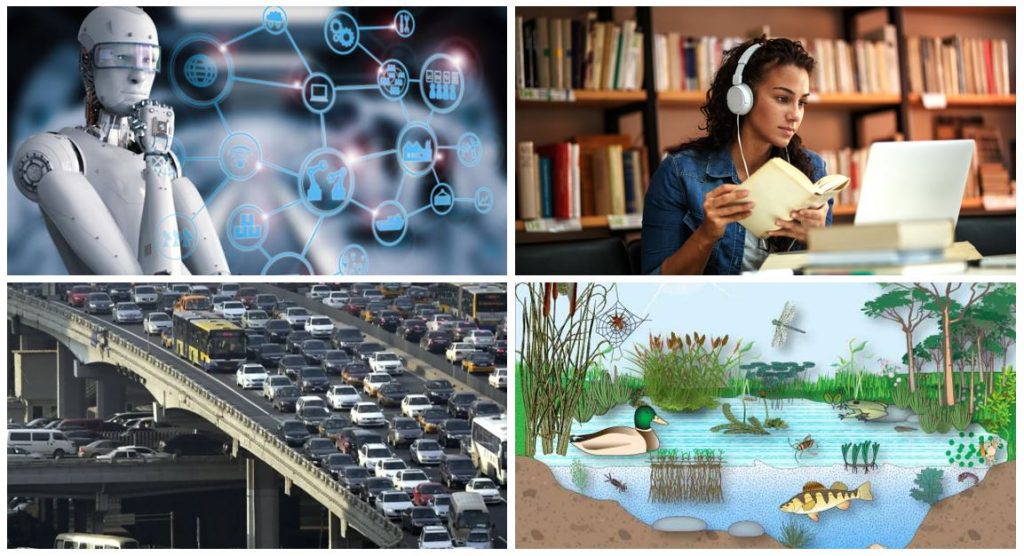
We are about supporting AM Leaders!
Here’s the situation we face:
We are moving into a “perfect storm” where our natural and built assets move into states of uncertainty and instability. We must rapidly build an understanding of the integration between our ecology and built infrastructure because rapid changes will increasingly challenge or capacity to foresee and manage risks. We are already seeing the initial evidence or these risks in major fire and flood events and likely pandemic events.
Growth boom infrastructure is approaching end of life, ageing population requires infrastructure realignment, climate, environment and virus risk changes start to move from debated possibility to clear and present dangers. Technology is the wild card with the potential to provide new solutions or exacerbate existing problems. Where we allocate our resources is more important than ever before.
The decisions made by this generation will determine the quality of life of future generations. A future that could be bleak and fearful or exciting, prosperous and filled with hope. Our current decision-making framework and decision support processes, systems and assumptions need rapid overhaul to support our current leaders guide us to the future we want and the following generations deserve. We can avoid reacting to preventable or manageable disasters by developing integrated rather than fragmented strategic plans.
What do we want for our future?
Talking Infrastructure’s Vision is a world in which decision makers understand and care about the cumulative consequences of their decisions and their constituencies understand the trade-offs involved in those decisions.
What do we have to stop doing?
We need to stop thinking of ‘infrastructure’ as a panacea for all economic ills, but rather to consider individual infrastructure projects and their individual contributions to general wellbeing – economic, social, and environmental. What questions do we need to ask of all projects to make sure that we are ‘future friendly’? What do we need to know about the relationship between future change and infrastructure? What changes do we need to make to current decision processes to achieve this goal? Could these resources be better allocated to prepare for future foreseeable risks.
We want to avoid infrastructure waste. Stranded assets are assets that are now obsolete or non-performing and recorded in corporate books as a loss of profit. Current estimates vary but run into the many trillions of dollars. Climate, technological and demographic changes all contribute to this problem. But so do we – when we construct infrastructure better suited for the 20th than the 21st century. Every year we use up valuable resources and add to environmental damage and often social damage, constructing long-living assets destined to end on the stranded assets scrap pile. Resources that could be used to mitigate more urgent foreseeable risks.
We believe we can do better
In the past, governments have tended to see infrastructure as an expenditure ‘blob’ – useful for soaking up unused corporate savings to ‘kickstart’ the economy or as a generic ‘source of jobs’. These are the attitudes that have got us where we are now. We believe that if we focus on ‘future friendly’ projects, that takes future change into account and specifically designs for it, we can avoid unnecessary waste and manage future risks.
This requires us not to think of ‘infrastructure’ as a panacea for all economic ills, but rather to consider individual projects and their individual contributions to general wellbeing – economic, social, and environmental. What questions do we need to ask of all projects to make sure that we are ‘future friendly’? What do we need to know about the relationship between future change and infrastructure? What changes do we need to make to current decision processes to achieve this goal?
This is what Talking Infrastructure is about!
Do you also believe we can do better?
JOIN TALKING INFRASTRUCTURE
to keep up with latest thinking and doing and join us in our work towards wiser infrastructure decision making,
go to top of the right hand column.
It’s free and you will be part of a growing number of professionals from all disciplines: planners, strategic asset managers, financial specialists, environmental scientists, economists, sociologists, administrators and many others who share the realisation that to really benefit from the many changes that now surround us, all decisions need to undertand the past, act in the present ,and be open to the futures now emerging, so
Get Involved! Members receive our monthly newsletter containing brief synopses of what we have posted during the month and opportunities for you to share your knowledge and ideas with others.

The Scene
It was twenty years ago and I was in the office of a regional council CEO. I led with an open question “How important do you think that AM is?” He was a nice fellow, he didn’t want to hurt my feelings but clearly he was not enthusiastic about the subject. “I guess it is valuable, but we aren’t going to do it!” “OK” I said, curious, “Why not?” “Well, look it’s this way, if that section of Carter’s road gets washed out in the next flood, that is where I am going to have to put my money, not into some future renewal fund!” “Entirely right”, I replied. “That will be your first priority. Can asset management do anything to help avoid that flooding problem? Can it, at a minimum, reduce your overall asset maintenance expenses to free up the funds you need?” It was clear that he had not seen asset management in this light, that is as a solution. He had equated AM with a renewal forecast, a problem. And too many still do that – CEOs and Asset Managers both!
The Story
There was the Asset Manager who presented his renewal forecast to the board and told them that they would have to double their asset expenditures. The board sacked him. And they were right to do so! That fellow was not doing his job. He was simply stating the problem and expecting others to take action so that he would not have to.
The Point
A future renewal forecast is not the end point of an Asset Manager’s task – it is the beginning. It states the problem, as accurately as can be done. But it is still only the problem. Now a solution has to be found. The task of the asset manager is to find that solution. Not to be like a certain US President who expects to be praised for doing nothing to solve the problem whilst making it worse. Indeed by not immediately taking action to find a solution that Asset Manager was making the renewal problem worse.
The Future?
Asset managers often ask how they can sell asset management to the board or senior executives. The answer is obvious (although not necessarily easy): it is to tell them how AM can solve their problems. The first step is to find out what their (not your) problems are. What do their customers, their clients, their regulators want of them? Most often when I ask asset managers what are their organisation’s key issues, they answer in terms of their own issues instead. At asset management conferences I hear people claim they want to make their organisation an outstanding asset management organisation. That is OK but it is not why your organisation is in business!
Lou Cripps, co-author with Ruth Wallsgrove of ‘Building an Asset Management Team’ ( highly recommended and available from the Talking Infrastructure website) summed it up this way.

Recent Comments